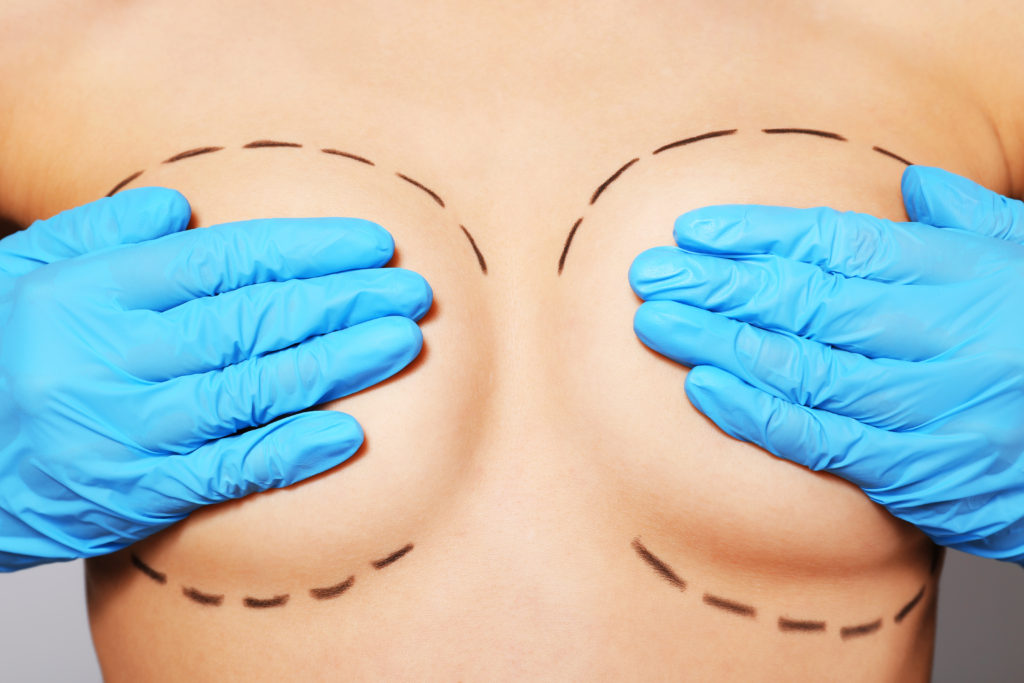Breast augmentation revision is additional surgery after the original breast augmentation procedure. There are many reasons why a woman considers breast augmentation revision: her breasts may have changed due to pregnancy or weight fluctuations, she doesn’t like the original breast shape any more, or the upper half of the breast doesn’t have enough fullness. The implant may also be malpositioned, sliding off to one side. And in some cases, a woman may simply no longer want an implant.
Women who see me for breast augmentation revision tend to be frustrated by a result that’s not what they expected, the cost and recovery involved in breast augmentation, and an overall belief that they weren’t fully informed about the pros and cons of implants.
This is why honest communication with my patients is so important before the initial augmentation surgery. Listening to a woman’s concerns and understanding her aesthetic goals are critical to post-surgery satisfaction. I spend a great deal of time understanding what women want from augmentation surgery and communicating what’s realistically possible.
I find that the better communication I have with each patient, the higher the post-surgery satisfaction rate. Making sure patients are happy with their results is my number one goal.
As a board-certified leading authority in breast surgery, I perform breast augmentation revision surgery regularly with great success—which I measure by patient satisfaction.
Why Breast Augmentation Revision?
The most common reasons for breast augmentation revision are:
- Deflated saline implants
- Silicone implants with a tear in the shell
- Desire for a change in the size of implants (going smaller or bigger)
- One or both breast implants have been displaced or malpositioned
- Natural breast tissue volume has changed
- Weight loss or gain has affected implants, with stretching or sagging
- Desire to get a breast lift (which was necessary but not done with original augmentation) because the breast is now sagging—along with switching out the implants
- Scar tissue has tightened around implant area, restricting the implant, leaving it hard, distorted, and painful (called capsular contracture)
- Concern about possible breast implant illness
In the case of implant replacement, woman simply need an implant that has different dimensions or characteristics. Choosing the correct implant can make a big difference.
If the breast doesn’t look natural, switching size, style, and/or from saline to silicone can help. And if the upper half of the breast has a convexity or “speed bump,” for example, switching to a different implant altogether can result in a more aesthetically pleasing look.
As a board-certified plastic surgeon specializing in breasts, I have worked with all the various implants, which is extremely important when deciding with a patient what implant is best for her in breast augmentation revision.
Why Breast Implant Removal?
Increasingly, women are requesting implant removal alone, with no replacement of the implant. In these situations, a woman no longer wants an implant for one of several reasons: her lifestyle has changed, she did not really want an implant in the first place, concern about additional future revision surgery, and/or health concerns.
In my experience, many women who have implant removal alone do not need a breast lift. This is almost always the case if the breast tissue was tight prior to the original surgery, even if a woman has had children. Many women with sagging breasts, while they would have an improvement with a lift, choose not to have one.
What’s Involved in Breast Augmentation Revision?
The exact procedure performed is very specific to the issue I am trying to correct. Options include repairing with mesh what’s called the implant pocket, which is where the implant sits relative to the skin and muscle. After the repair, I then properly positioning the implant. Breast implant revision can also involve creating a new pocket for the implant (called a neo pocket), changing out the implant (or taking it out altogether), doing a breast lift, and/or removing the scar tissue, or capsule, that builds up around an implant.
Once this capsule is removed, I always send it for evaluation by a pathologist. In cases where breast implant illness is a concern, I discuss all the facts and issues with my patient and we decide together whether or not the capsule will be removed. If it is removed, I prefer to remove it with the implant inside. I call this “en masse” (though it’s also referred to as “en bloc”).
I then take a precautionary step: I irrigate the pocket with something called PhaseOne solution, or hypochlorous acid, an antiseptic that eliminates biofilms in tissue helping to prevent breast implant illness and capsular contracture. Biofilms form when bacteria adhere to the surface of the breast implant (or any implant in the body, for that matter) and begin to reproduce.
Photographs are always taken in the operating room of the breasts with the implants removed, of any tissues sent to the lab, and of the implants themselves. These photos are available to patients if they want to see them.
Breast augmentation revision can deliver beautiful results when an expertly performed surgery is coupled with proper implant selection (or, in the case of implant removal, no implant at all).

